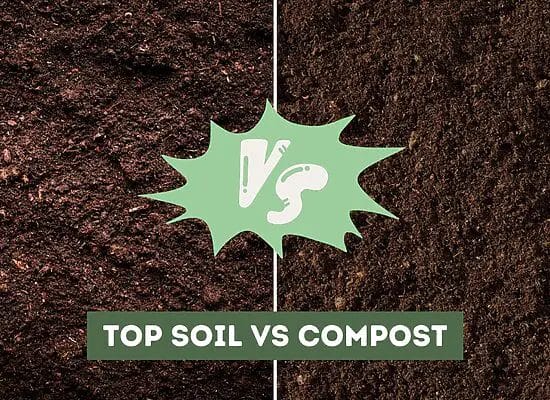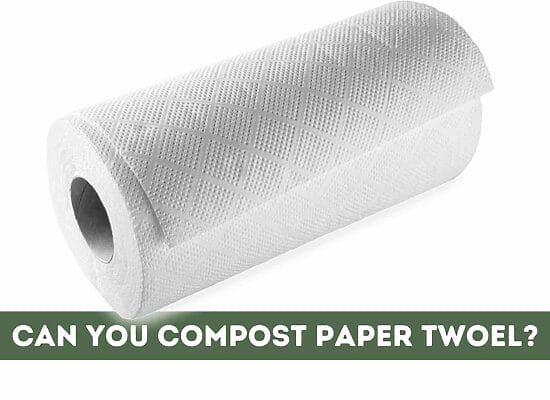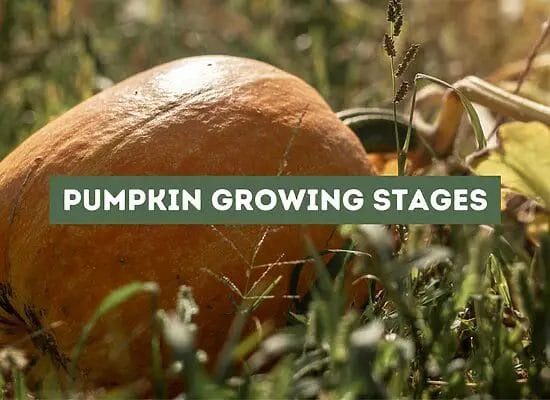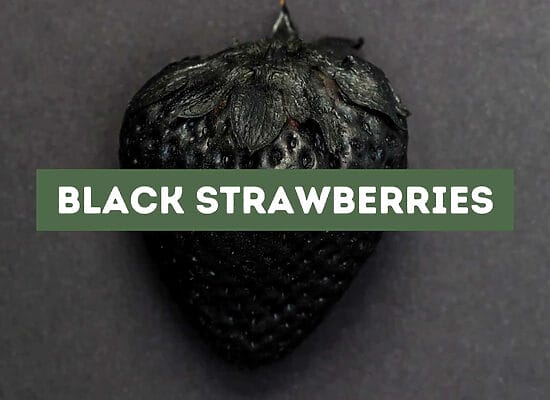
Are you looking for some unique and beautiful flowers to add to your garden or bouquet? Look no further than flowers that start with Y! While not as common as other letters in the alphabet, there are still plenty of stunning options to choose from.
One popular flower that starts with Y is the Yarrow. With its delicate white or yellow blooms, this flower can add a touch of elegance to any garden or floral arrangement. Another option is the Yellow Archangel, which has vibrant yellow and green leaves and can be a great addition to a shady corner of your yard.
But these are just a few examples – there are many more flowers that start with Y to discover and explore. Whether you’re a seasoned gardener or just starting out, adding some Y flowers to your collection can be a fun and unique way to enhance your space. So why not try something new and incorporate some Y flowers into your next gardening project?
Yarrow (Achillea Millefolium)
If you’re looking for a hardy and reliable garden flower that can attract pollinators and insects, then Yarrow (Achillea Millefolium) might be the perfect choice for you. This herbaceous perennial plant is native to Europe but has spread far and wide today. Yarrow is also still used as a herbal remedy by people who believe in its traditional uses.
Yarrow is a member of the aster or composite family (Asteraceae) and has flat-topped or dome-shaped clusters of small white or pink flowers that bloom from April to October. It can reach about 3 feet in height, and its aromatic, fine, feathery-cut leaves give the plant a soft, fern-like appearance.
One interesting fact about Yarrow is that it has been used for centuries as a natural insect repellent. It is said that if you rub the leaves on your skin, it can keep mosquitoes and other biting insects away. Yarrow is also known for its medicinal properties, and it has been used to treat various ailments such as fever, colds, and digestive issues.
If you’re planning to grow Yarrow in your garden, it’s important to note that it prefers well-drained soil and full sun. It is also tolerant of drought and can survive in a range of soil types. Yarrow can be propagated by division or by seed, and it’s relatively easy to grow and care for.
Here are a few tips for growing Yarrow in your garden:
- Plant Yarrow in a sunny location with well-drained soil.
- Water the plant regularly but avoid overwatering.
- Deadhead spent blooms to encourage more flowers.
- Divide the plant every few years to keep it healthy.
- Use Yarrow as a natural insect repellent by rubbing the leaves on your skin.
Yellow Archangel (Lamium Galeobdolon)
If you’re looking for a unique and beautiful plant for your garden or house, Yellow Archangel (Lamium Galeobdolon) could be an excellent choice. This stoloniferous trailing perennial is a member of the mint family and is known for its oval, slender-pointed, and serrated leaves that form a loose mat. In late spring, whorls of 5-6 yellow flowers, each about 3/4 in. long, arise from the leaf axils.
Yellow Archangel is a low-maintenance plant that can tolerate a wide range of soil conditions, making it an ideal choice for both novice and experienced gardeners. It can grow up to 12 inches tall and spread up to 24 inches wide, making it perfect for ground cover.
Here are some tips for growing Yellow Archangel:
- Plant it in well-draining soil with good moisture retention.
- Water it regularly, especially during the hot and dry summer months.
- Fertilize it with a balanced fertilizer in the spring and summer.
- Prune it back in the fall to prevent it from becoming too invasive.
Yellow Archangel is also an excellent choice for a houseplant. It can be grown in a pot or hanging basket and placed in a bright, indirect light. Make sure to keep the soil moist but not waterlogged.
Yellow Wild Indigo (Baptisia Sphaerocarpa)
If you’re looking for a unique and eye-catching addition to your garden, consider the Yellow Wild Indigo (Baptisia Sphaerocarpa). This native perennial plant is known for its long spikes of brilliant yellow flowers, which resemble Lupines and attract bees and butterflies. The flowers last for about three weeks and are replaced by ornamental tan seedpods that make attractive additions to dried flower arrangements.
Yellow Wild Indigo is a hardy plant that can tolerate drought and poor soils. It grows best in full sun but can also thrive in part shade. The bluish-green leaves are held on upright stems, and over time, plants form slowly expanding clumps with deep and extensive root systems. Once established, they should not be disturbed.
One thing to note is that Yellow Wild Indigo is toxic to herbivorous livestock, so it should not be planted in areas where animals graze. However, it is a great choice for adding color and interest to your garden.
When planting Yellow Wild Indigo, make sure to give it enough space to grow and spread. It can take a few years to establish, but once it does, it will reward you with beautiful flowers year after year.
Yellow Coneflower (Echinacea Paradoxa)
If you’re looking for a unique and vibrant addition to your garden, look no further than the yellow coneflower, also known as Echinacea Paradoxa. This perennial plant is the only member of the Echinacea family to feature yellow flowers, making it a standout among its purple-flowered relatives.
Yellow coneflowers can grow up to 3 feet tall and produce large, single blossoms that are 6 inches or more across. The bright yellow to yellow-orange ray flowers surround a chocolate brown bristly center on the ends of tall, lanky stems. Blooms are surprisingly fragrant and make good cut flowers.
Not only is the yellow coneflower a beautiful addition to any garden, but it also serves an important purpose for pollinators. Bees, butterflies, and other insects are attracted to the bright yellow flowers and feed on the nectar and pollen. By planting yellow coneflowers, you can help support local pollinator populations.
Yellow coneflowers are relatively easy to grow and care for. They prefer full sun to partial shade and well-draining soil. It’s best to plant them in the spring or fall, and they can be propagated by seed or division.
In addition to its beauty and pollinator benefits, the yellow coneflower has also been used for medicinal purposes by Native American tribes. It’s believed to have immune-boosting properties and has been used to treat a variety of ailments.
Yellow Flag (Iris Pseudacorus)
If you’re looking for a stunning flowering perennial to add to your garden, the Yellow Flag (Iris Pseudacorus) might be just what you need. This herbaceous plant is native to Eurasia and Africa but has naturalized in wetland areas throughout North America. The genus name Iris is named after the Greek Goddess of rainbows, and the common name “flag” comes from an old English word for reeds. This plant is known for its bright yellow flowers that can be up to 10 cm (3.9 in) across, with the typical iris form.
One of the unique features of the Yellow Flag is its ability to live in wet areas of the landscape where many other plants would perform poorly. If you have a pond or water feature in your garden, this plant will thrive in the moist soil. It can grow up to 2 m (6 ft 7 in) tall, with erect leaves up to 90 cm (35 in) long and 3 cm (1.2 in) broad. The sword-shaped leaves add an interesting texture to any garden.
Not only is the Yellow Flag a beautiful addition to your garden, but it also attracts birds. Birds are attracted to the plant’s seeds, which can be found in the flower bud. If you’re a bird lover, this plant is a must-have.
Here are some tips for planting and growing Yellow Flag:
- Plant the bulbs in the spring or fall.
- Choose a spot with full sun to partial shade.
- Make sure the soil is moist but well-drained.
- Add compost or organic matter to the soil to improve drainage.
- Water the plant regularly, especially during dry spells.
- Fertilize with a balanced fertilizer in the spring.
- Divide the plant every few years to prevent overcrowding.
Adding Yellow Flag to your garden is a great way to add color and texture while attracting birds. With the right care, this plant will thrive and bring joy to your outdoor space.
Yellow Daylily (Hemerocallis Lilioasphodelus)
If you’re looking for a bright and cheerful addition to your garden, the Yellow Daylily (Hemerocallis Lilioasphodelus) is an excellent choice. This stunning plant is commonly called lemon daylily or lemon lily and features 4″ diameter, trumpet-shaped, lemon yellow flowers that bloom in the summer.
Yellow Daylilies are native to eastern Asia, where they have been cultivated for their food value and medicinal properties for centuries. They are also a popular garden plant, and thousands of varieties have been developed.
These perennials grow up to 3′ tall and prefer full sun to partial shade. They are easy to grow and require minimal maintenance, making them an excellent choice for beginners. Yellow Daylilies are also known for their ability to attract butterflies and hummingbirds to your garden.
In addition to their stunning appearance, Yellow Daylilies are also known for their edible flowers. The petals of the flowers can be used in salads, and the buds can be pickled and used as a substitute for capers. However, it’s important to note that some people may have an allergic reaction to the flowers, so it’s best to test a small amount before consuming.
Yellow Pitcher Plant (Sarracenia Flava)
If you are looking for an unusual addition to your garden, the Yellow Pitcher Plant (Sarracenia Flava) might be just what you need. This carnivorous plant is a perennial that is prized for its slender yellow-green pitchers with erect lids and dangling yellow flowers. It is native to savannas, seepage bogs, and pocosins of Alabama, Georgia, and the Carolinas.
The Yellow Pitcher Plant is a stemless, herbaceous perennial that grows up to 3 feet tall. It is a carnivorous plant that feeds on insects and other small animals. The plant has a unique way of catching its prey – it lures them into its pitcher-shaped leaves, where they become trapped and eventually digested.
In the garden, the Yellow Pitcher Plant prefers full sun to partial shade and moist, acidic soil. It is an excellent addition to a bog garden or water feature, as it requires consistently moist soil. The plant is hardy in USDA zones 6-9.
In the ecosystem, the Yellow Pitcher Plant plays an important role in controlling insect populations. It is also an indicator species for wetland ecosystems, as it is only found in areas with consistently moist soil.
Yucca
If you’re looking for a low-maintenance plant that can thrive indoors or outdoors, Yucca is an excellent choice. These plants are hardy and drought-resistant, making them perfect for those who don’t have a green thumb. Yucca plants are native to the Americas, and they come in many different varieties, each with unique characteristics.
Yucca plants are a great addition to any garden. They are easy to care for and can grow up to 10 feet tall. They produce beautiful white or cream-colored flowers that bloom in the summer. Yucca plants are also great for xeriscaping, as they require little water and can survive in dry conditions.
If you’re looking for a houseplant, Yucca is an excellent option. They are easy to care for and can add a touch of greenery to any room. Yucca plants can grow up to 3 feet tall and produce beautiful flowers. They are also great air purifiers, making them perfect for those with allergies or respiratory issues.
Here are some popular varieties of Yucca plants:
- Adam’s Needle (Yucca filamentosa)
- Spanish Bayonet (Yucca aloifolia)
- Joshua Tree (Yucca brevifolia)
- Banana Yucca (Yucca baccata)
- Soapweed Yucca (Yucca glauca)
Yucca plants are also used for medicinal purposes. The roots of the plant contain saponins, which have anti-inflammatory properties. Yucca root is often used to treat arthritis and other inflammatory conditions.
Yellow Bell (Tecoma Stans)
Yellow Bell, also known as Tecoma Stans, is a fast-growing evergreen shrub that can add a vibrant pop of color to any garden. This plant features slender gray-brown branches with clusters of bright yellow, trumpet-shaped flowers that bloom from spring until frost. The green, toothed, lace-shaped leaves offer a beautiful backdrop for the shrub’s vibrant blooms, which attract hummingbirds, butterflies, and bees.
Yellow Bell is a great addition to any garden, as it is drought-tolerant once established and virtually disease and pest-free. It is best grown in full sun with regular irrigation that allows enough time for the plant to dry out between waterings. Fertilize in spring, summer, and autumn for optimal growth and flower production.
This shrub can be used as a specimen or massed in shrub borders or containers. It can grow up to 10 meters (30 feet) tall, with a hardiness zone of 8 to 11 and a height at maturity of 180 to 240 inches.
Yellow Bell is also a great plant for pollinators and birds. Its vibrant blooms attract hummingbirds, butterflies, and bees, making it a great addition to any pollinator garden. The plant’s seeds are also a food source for birds, making it a great plant for birdwatchers.
Yellow-Eyed Grass (Sisyrinchium Californicum)
If you’re looking for a unique and eye-catching addition to your garden, Yellow-Eyed Grass (Sisyrinchium Californicum) is an excellent choice. This small perennial plant is native to California and other parts of western North America. It is a member of the Iris family and has tiny iris-like leaves with bunches of bright yellow flowers that appear from May through June.
Yellow-Eyed Grass is a great option for rock gardens as long as adequate moisture is provided. It forms small clumps and self-sows, so it will spread itself readily given favorable conditions. This charming plant eventually forms clumps that can be separated to produce more plants.
This plant grows to be about 8 to 12 inches tall and wide, and numerous sunny yellow star-flowers are borne just above the tufted, grass-like, smooth foliage. Yellow-Eyed Grass likes moist areas but will become drought tolerant in a conventional garden. It grows in the wild along the coast ranges.
Yellow Wood Sorrel (Oxalis Stricta)
If you’re looking for a unique and interesting addition to your garden, Yellow Wood Sorrel (Oxalis Stricta) might be just what you need. This plant is a member of the Oxalidaceae family and is known for its bright yellow flowers and clover-like leaves.
Yellow Wood Sorrel is a hardy plant that can thrive in a variety of conditions, making it a great addition to any ecosystem. It is a common weed in North America, but it can also be found in parts of Eurasia.
One interesting fact about Yellow Wood Sorrel is that its leaves and flowers can be added to salads for a refreshing and astringent flavor. The Iroquois and Kiowa tribes used this species medically for a variety of ailments.
If you’re thinking about adding Yellow Wood Sorrel to your garden, keep in mind that it can be invasive in some areas. It’s a good idea to keep an eye on it and make sure it doesn’t take over.
Here are some quick facts about Yellow Wood Sorrel:
- Scientific name: Oxalis Stricta
- Common names: Yellow Wood Sorrel, Common Yellow Oxalis, Upright Yellow-Sorrel, Lemon Clover, Sourgrass, Sheep Weed, Pickle Plant
- Habitat: Terrestrial, man-made, or disturbed habitats, meadows, and fields
- Blooms: Mid-spring through fall
- Flowers: Small, bright yellow, five-petalled
- Leaves: Clover-like, fold at night and open during the day
- Interesting fact: Leaves and flowers can be added to salads for a refreshing and astringent flavor
Overall, Yellow Wood Sorrel is a unique and interesting plant that can add a splash of yellow to your garden. Just be sure to keep an eye on it so it doesn’t take over!
Yew (Taxus Baccata)
If you want to add a touch of elegance and sophistication to your garden, then the Yew (Taxus Baccata) is the perfect choice. This evergreen tree is native to Western, Central, and Southern Europe and is known for its dense spreading branches and dark green needle-like leaves.
Aside from its ornamental value, the Yew is also used in furniture making due to its durability and fine texture. But be careful, as all parts of the plant are highly toxic especially the bright red berries.
If you’re planning to add a Yew to your garden, make sure to plant it in well-draining soil and provide it with regular watering. It can grow up to 60 feet in height, so make sure to give it enough space to grow.
Here are some fun facts about the Yew:
- The oldest living Yew tree in the world is estimated to be over 2,000 years old and can be found in the churchyard of St. Cynog’s Church in Wales.
- Yew wood was traditionally used to make longbows, as it is both strong and flexible.
- The Yew is also used in traditional medicine, as the bark contains a compound called taxol which has anti-cancer properties.
Adding a Yew to your garden not only adds beauty, but also a touch of history and tradition. Just make sure to handle it with care and enjoy its elegance from a safe distance.
Exploring flowers and plants that start with the letter “Y” unveils a world of unique and captivating species. From the delicate elegance of Yarrow to the vibrant allure of Yellow Archangel, these plants offer a diverse range of colors, shapes, and textures to enhance your garden or floral arrangements.
Whether you’re an experienced gardener or just beginning your green thumb journey, incorporating Y flowers like Yellow Wild Indigo and Yellow Coneflower can bring a touch of charm and vibrancy to your outdoor space. So why not embark on a botanical adventure and discover the wonders of plants that start with Y?
And don’t forget to share the article with a friend who shares your love for gardening and botanical wonders. They’ll appreciate for sure the diverse and captivating species discussed.












